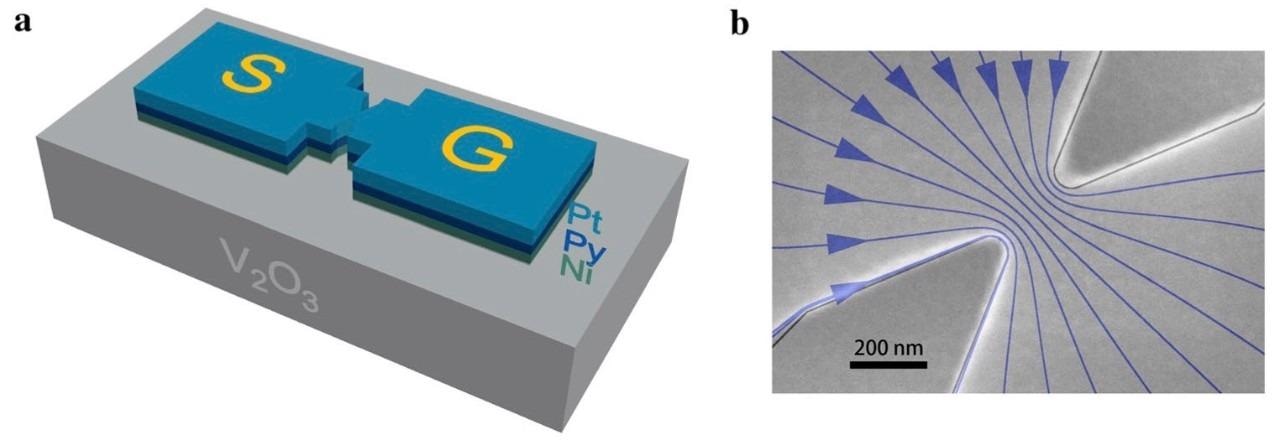A research group has come up with an approach to create a new kind of memory, marking a remarkable discovery in the highly advanced field of artificial intelligence.
 A schematic of a nanoconstriction spintronic resonator (a), which depicts signal (S) and ground (G) electrical contacts, along with the current flow (b), measured at 200 nanometers. Image Credit: New York University’s Department of Physics.
A schematic of a nanoconstriction spintronic resonator (a), which depicts signal (S) and ground (G) electrical contacts, along with the current flow (b), measured at 200 nanometers. Image Credit: New York University’s Department of Physics.
Quantum materials hold great promise for improving the capacities of today’s computers. The work draws upon their properties in establishing a new structure for computation.
Andrew Kent, Study Senior Investigator and Physicist, New York University
The breakthrough was achieved in collaboration with scientists from the University of California, San Diego (UC San Diego) and the University of Paris-Saclay. The study has been published in the Nature journal Scientific Reports.
Since conventional computing has reached its limits, new computational methods and devices are being developed. These have the potential of revolutionizing computing and in ways that may one day rival the human brain.
Ivan Schuller, Study Author and Physicist, University of California San Diego
In recent times, researchers had a desire to make progress in what is called “neuromorphic computing.” It is a process that aims to simulate the human brain’s functionality. Due to its human-like features, it might provide highly efficient and novel methods to process data using approaches that cannot be achieved with the help of present computational techniques.
As part of the study reported in Scientific Reports, the scientists have designed a new device that marks significant advances made earlier in this field. For this purpose, researchers have constructed a nanoconstriction spintronic resonator to control familiar physical properties in creative ways.
Resonators can produce and store waves of well-specified frequencies that are quite similar to the box of a string instrument. In this context, the researchers designed a new kind of resonator that has the potential to store and process data similar to neurons and synapses present in the brain.
The concept explained in Scientific Reports integrates the special properties of quantum materials jointly with that of spintronic magnetic devices.
Spintronic devices are nothing but electronics that make use of an electron’s spin besides its electrical charge to process data in ways that tend to reduce energy while increasing storage and processing capacity when compared to more conventional methods.
The so-called “spin torque oscillator” is one such widely used device that functions at a particular frequency. By integrating it with a quantum material, this frequency can be tuned, thereby increasing its applicability significantly.
This is a fundamental advance that has applications in computing, particularly in neuromorphic computing, where such resonators can serve as connections among computing components.
Andrew Kent, Study Senior Investigator and Physicist, New York University
This study was financially supported by the Quantum Materials for Energy-Efficient Neuromorphic Computing, an Energy Frontier Research Center funded by the U.S. Department of Energy’s Office of Science Basic Energy Sciences (BES) under award DE-SC0019273.
Journal Reference:
Xu, J.-W., et al. (2021) A quantum material spintronic resonator. Scientific Reports. doi.org/10.1038/s41598-021-93404-4.